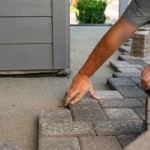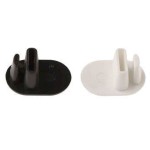How To Paint a Concrete Patio: A Comprehensive Guide
Painting a concrete patio can dramatically enhance the aesthetic appeal of an outdoor living space. A freshly painted patio not only provides a more visually pleasing surface but can also offer protection against weathering, staining, and wear and tear. This article provides a detailed guide on how to successfully paint a concrete patio, covering everything from preparation to application.
The process is relatively straightforward, but meticulous preparation is crucial for achieving a durable and long-lasting finish. Skipping steps or cutting corners will likely result in premature peeling, chipping, or fading. Therefore, understanding each step and following instructions carefully is essential for a professional-looking result.
Key Point 1: Preparation is Paramount
Proper preparation is the most critical factor in achieving a successful and long-lasting paint job on a concrete patio. This phase includes cleaning, repairing, and etching the concrete surface to ensure optimal paint adhesion.
Cleaning the Surface: The first step involves thoroughly cleaning the concrete patio. This removes dirt, grease, mildew, and other contaminants that can prevent the paint from properly bonding to the surface. Begin by sweeping the patio to remove loose debris such as leaves, twigs, and dirt. For stubborn dirt and grime, use a stiff-bristled brush and a solution of trisodium phosphate (TSP) or a concrete cleaner specifically designed for outdoor use. Follow the manufacturer's instructions for mixing and application.
Rinse the patio thoroughly with a pressure washer. This is highly recommended as it provides the most effective way to remove embedded dirt and cleaning residue. Ensure the pressure washer is set to a moderate pressure setting to avoid damaging the concrete surface. If a pressure washer is not available, a garden hose with a high-pressure nozzle can be used, but the cleaning may be less effective. Allow the patio to dry completely, usually for at least 24 hours, before proceeding to the next step.
Repairing Cracks and Damage: Inspect the patio for any cracks, chips, or other damage. These imperfections need to be repaired before painting to prevent moisture from seeping underneath the paint and causing further damage. Small cracks (less than ¼ inch) can typically be filled with a concrete patching compound or crack filler. Clean the crack thoroughly with a wire brush to remove any loose debris. Apply the patching compound according to the manufacturer's instructions, using a putty knife to smooth the surface and ensure it is flush with the surrounding concrete. Allow the patching compound to dry and cure completely before sanding it smooth. For larger cracks or significant damage, it may be necessary to consult a professional contractor.
Etching the Concrete: Concrete is a relatively smooth surface, which can make it difficult for paint to adhere properly. Etching the concrete creates a slightly rough surface that provides better adhesion for the paint. This can be achieved using muriatic acid or a concrete etching solution. Muriatic acid is a harsh chemical and requires careful handling. Always wear appropriate safety gear, including gloves, eye protection, and a respirator, when working with muriatic acid. Follow the manufacturer's instructions for dilution rates and application procedures.
Alternatively, a concrete etching solution can be used. These solutions are typically less hazardous than muriatic acid but still require proper safety precautions. Apply the etching solution to the concrete, following the manufacturer's instructions. The etching process will typically involve scrubbing the solution into the concrete with a stiff-bristled brush. After the etching process is complete, rinse the patio thoroughly with water to remove all traces of the etching solution. Allow the patio to dry completely for at least 24 hours before proceeding to painting.
Key Point 2: Selecting the Right Paint and Tools
Choosing the appropriate paint and tools is crucial for achieving a professional-looking and durable finish. The type of paint used, the application method, and the quality of the tools all contribute to the overall outcome.
Choosing the Right Paint: For concrete patios, it is essential to use a paint specifically designed for concrete surfaces. These paints are formulated to withstand the harsh outdoor environment and to adhere properly to concrete. Two common types of paint suitable for concrete patios are acrylic latex paint and epoxy paint.
Acrylic latex paint is a popular choice due to its durability, water resistance, and ease of application. It is also relatively affordable and available in a wide range of colors. Look for acrylic latex paints specifically formulated for concrete floors or patios. Epoxy paint offers even greater durability and resistance to abrasion, chemicals, and stains. It is a good choice for high-traffic areas or patios that are exposed to harsh conditions. However, epoxy paint is typically more expensive and requires more careful preparation and application than acrylic latex paint.
Consider adding a concrete sealant after painting for added protection against UV rays, moisture, and stains. This will help to prolong the life of the paint and keep the patio looking its best.
Choosing the Right Tools: The following tools are essential for painting a concrete patio: * Paint Roller: Use a high-quality paint roller with a nap length appropriate for concrete surfaces. A thicker nap (e.g., ¾ inch) is generally recommended for rougher concrete surfaces, while a thinner nap (e.g., ⅜ inch) is suitable for smoother surfaces. * Paint Roller Extension Pole: An extension pole will make it easier to reach all areas of the patio without having to bend over or kneel. * Paint Brush: A high-quality paint brush is needed for cutting in edges and painting hard-to-reach areas. * Paint Tray: A paint tray will hold the paint and allow for easy loading of the paint roller. * Painter's Tape: Painter's tape is used to mask off areas that should not be painted, such as walls, steps, or landscaping. * Mixing Stick: A mixing stick is used to thoroughly mix the paint before and during application. * Safety Glasses: Safety glasses protect the eyes from paint splatters. * Gloves: Gloves protect the hands from paint. * Drop Cloths: Drop cloths protect surrounding areas from paint splatters.
Key Point 3: Application Techniques for Optimal Results
Proper application techniques are essential for achieving a smooth, even, and durable paint finish. This involves applying the paint in thin, even coats and allowing each coat to dry completely before applying the next.
Priming the Concrete (Optional): While not always necessary, priming the concrete patio before painting can improve paint adhesion and provide a more uniform finish. Use a concrete primer specifically designed for use with the chosen paint. Apply the primer according to the manufacturer's instructions, using a paint roller or brush. Allow the primer to dry completely before proceeding to painting.
Applying the First Coat: Begin by cutting in the edges of the patio with a paint brush. This involves painting a narrow strip along the perimeter of the patio, where it meets walls, steps, or landscaping. This creates a clean, defined edge and prevents the paint roller from accidentally painting these areas. Use painter’s tape to protect adjacent surfaces if needed.
Next, use a paint roller to apply the first coat of paint to the main area of the patio. Dip the roller into the paint tray, making sure not to overload it. Roll the paint onto the patio in long, even strokes, overlapping each stroke slightly to ensure complete coverage. Avoid applying the paint too thickly, as this can lead to drips, runs, and uneven drying. Work in manageable sections to prevent the paint from drying before it can be properly rolled out.
Allow the first coat of paint to dry completely before applying the second coat. Drying times will vary depending on the type of paint, the temperature, and the humidity. Consult the manufacturer's instructions for specific drying times. It is generally recommended to wait at least 24 hours before applying the second coat.
Applying the Second Coat: Apply the second coat of paint using the same techniques as the first coat. Again, work in manageable sections and avoid applying the paint too thickly. The second coat will provide additional coverage and durability, resulting in a more uniform and long-lasting finish.
Curing Time: After applying the final coat of paint, allow the patio to cure completely before using it. Curing times will vary depending on the type of paint and the environmental conditions. Consult the manufacturer's instructions for specific curing times. It is generally recommended to wait at least 48-72 hours before walking on the patio and at least 7 days before placing furniture or heavy objects on it.
Clean Up: Once the painting is complete, clean all tools thoroughly with water and soap. Properly dispose of any leftover paint and empty paint cans according to local regulations. Remove painter's tape carefully to avoid pulling up any paint. Inspect the finished patio for any imperfections and touch up as needed.
By following these steps, an individual can successfully paint a concrete patio, resulting in a visually appealing and durable outdoor surface. The key to achieving a successful outcome lies in thorough preparation, careful selection of paint and tools, and meticulous application techniques. The finished product will significantly enhance the aesthetic value and functionality of the outdoor living space.

How To Paint A Concrete Porch Or Patio

How To Paint A Porch Floor With Concrete The Honeycomb Home

Before And After Painted Concrete Patio Thistlewood Farm

How To Paint A Concrete Porch Or Patio

How To Paint A Concrete Patio Exquisitely Unremarkable

How To Paint A Concrete Porch Or Patio
:max_bytes(150000):strip_icc()/cement-tile-1-of-1-683x1024-f5a283b105e04abf8729e7390f9148bc.jpg?strip=all)
15 Painted Concrete Patio Designs
:max_bytes(150000):strip_icc()/faux-painted-rug2-5d0d2b1a8ddd4c60a39ffd329840874e.jpg?strip=all)
15 Painted Concrete Patio Designs

Backyard Makeover How To Paint Concrete Look Like Oversize Pavers A House Full Of Sunshine

Painted Concrete Slab And Brick Pavers One Year Later So Much Better With Age








